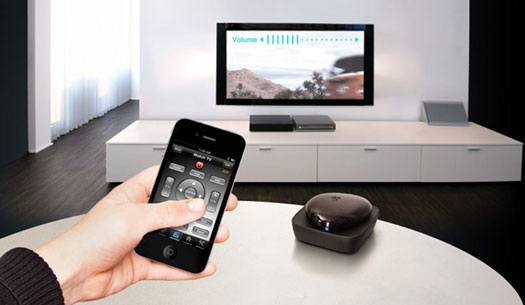It’ll be a few more months yet until 2011 turns to 2012, but if you knew what went down at this year’s International CES (Consumer Electronics Show), you’ll have a pretty good idea of what lies ahead in terms of home theater trends. What will the home theater look like? What technology, components, equipment, and accessories will soon be all the rage? What can you expect next from manufacturers and service providers? The show, held every year at the Las Vegas Convention Center in Nevada, is meant to give answers to such questions.
Smarter Smartphones and Tablets for your Home Theater
Smartphones are only getting smarter, and their evolution isn’t just changing the way we communicate; it’s also changing the way we consume multimedia content – movies, music, Internet videos, etc. On this post, we’ll highlight the kind of impact that present (and future) smartphones – as well as tablets – can have on your home theater.
Smartphones / tablets as universal remote controls: Smartphones and tablets, with their multi-touch screens and built-in wireless connectivity technologies, are also being used increasingly as universal remote controls. There are many ways of doing this: via an external infrared blaster/ receiver / transmitter (usually in dongle form), a Bluetooth-enabled media box, or dedicated apps for specific components (like the Xfinity app for Comcast-based DVRs). Some of our favorite universal remote apps for smartphones and tablets include: Thinkflood’s RedEye, NewKinetix Re, iRule, VLC Remote Free, Boxee Remote, and TiVo app for the iPhone / iPad / iPod Touch, RedEye for Android, Remote App for Samsung Galaxy Tab, Roku Remote for Android, Gmote, the Harmony Link and the Peel and VLC Remote Control app for multiple platforms.
Use of Language Processing and Voice Recognition Technology: Apple recently brought Siri – a voice-activated mobile assistant application – to the newly launched iPhone 4S. The app features natural language processing technology to let users send messages, schedule meetings, place phone calls, find all sorts of information, and more. After Siri, you can well expect that Android and other platforms will have their own voice recognition and mobile assistant apps soon – and that developers will find new ways to change the way we operate our home systems. Who knows? It’s not unlikely that soon we’ll be able to lower the shades or turn off the lights in the bedroom using just voice commands given to smartphones and tablets.
Wireless Sharing and Streaming: Do you have a home network of different media devices (phone, home theater, Internet TV, media servers and streamers, tablet, PC, etc.)? Well, there’s no longer any need for wires to connect all of them. With wireless sharing and streaming technologies like Apple’s AirPlay and AirPlay Mirroring, XBMC for Linux / OSX / Windows, or TVersity for DLNA-compliant devices, you can now put together a wireless streaming setup in your home theater and play your entertainment media (movies, music, games, pictures, etc.) wherever you want. It’s a trend poised to become even more mainstream as more DLNA-enabled smartphones and tablets and enhanced encoding technologies are introduced in the market.


